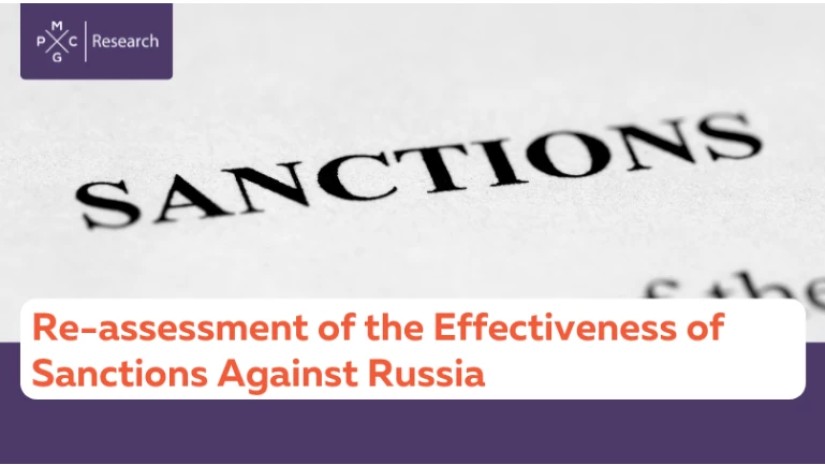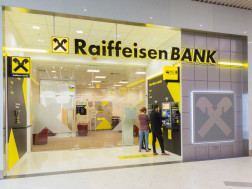PMC Research Centre published Re-assessment of the Effectiveness of Sanctions Against Russia. According to the document, more than two years have now passed since Russia’s full-scale invasion of Ukraine on 24 February 2022. During this period, an unprecedentedly broad package of sanctions has been imposed against Russia, with the quantity of measures and the targeted sectors, entities, and individuals constantly expanding. In total, including restrictions already in place before the 2022 invasion, Russia has been the subject of over 20,000 restrictive measures enacted by 41 countries,1 making it “the most sanctioned country in the world.” The scale of global cooperation is unparalleled in terms of the number of sanctions imposed and the number of countries enforcing them (as even historically neutral countries like Switzerland have got on board). Nevertheless, many countries, some of them significant global economies such as China, India, and Türkiye, have refrained from joining in. When it comes to designing the sanctions and determining on what they should be focused, the West has been at the forefront, specifically the US, the EU, and the UK.
To predict and then assess the impact of the sanctions, it was first necessary to understand the strategy or strategies behind them. Initially, it was unclear whether their goal was to shift public opinion within Russia against its government, or rather to punish Russia and its citizens without reservation, and to exhaust the Russian economy to the point that it would have no option but to stop the war. Eventually, most political leaders, namely those of G7 countries*, the EU, and others, agreed on a strategy of targeting Russia’s ability to finance the war.2 On that note, the Council of the EU officially declared: “The sanctions aim to weaken Russia’s ability to finance the war and specifically target the political, military and economic elite responsible for the invasion. The restrictive measures do not target Russian society. That is why areas such as food, agriculture, health and pharmaceuticals are excluded from the restrictive measures imposed".
However, if we evaluate the sanctions on the basis of whether they have halted Russia’s ability to finance the war, then the conclusion would be that, so far, they have failed. Pertinently, the war in Ukraine continues. Indeed, even though the volume and scale of sanctions has been unprecedented, their impact has been much lower than expected, with the resilience of Russia’s economy proving stronger than anticipated. In April 2022, the OECD estimated that Russia would undergo a deep recession, with its GDP declining by over 10% for the year of 2022.4 In reality, however, this decline amounted to only 1.2%. Broadening the timeline here to offer a broader perspective, estimates for 2022 made before the war began foresaw 2.7% growth, while during the COVID-19-related recession in 2020, Russia’s economy dropped by 3%. In 2023, the Russian economy recorded annual growth for the first time since before the pandemic, with a GDP increase of 3.6%. Moreover, the OECD recently raised its forecast for Russia’s 2024 GDP growth to 2.6% (from 1.8%).
The Russian Rouble, which crashed to record lows against both the US Dollar and Euro at the beginning of the war, has largely stabilized courtesy of effective monetary and fiscal policies adopted by the Russian government and the Central Bank of Russia (CBR). Pertinent policies here have included capital and current account transaction restrictions, and a high monetary policy rate (peaking at 20% in March 2022).
Some economists believe that the economic growth in Russia has been largely driven by a high level of government expenditure on the war and social assistance, which is not sustainable.7 Notably, the Russian government has taken various measures to adjust its economy to mitigate the effects of the West-led sanctions. However, many such measures can be effective only in the short or medium term, and will come with high costs in the long run. For example, keeping a high monetary policy rate in the long term would entail higher borrowing and investment costs. Moreover, the National Welfare Fund (NFW), which has been used to finance the deficit while most of Russia’s foreign reserves have been frozen by Western sanctions, might eventually run dry. Furthermore, Russia’s long-term prospects are threatened by unfavorable demographic trends (i.e. a high level of emigration and an aging population), a poor business climate, increasing government intervention, and limited access to many key drivers of long-term growth (e.g. FDI, which has been net negative since 2022).
Meanwhile, it is apparent that the force with which the sanctions have been imposed has been considerably weaker than expected. In some cases, the implementation of sanctions was delayed, while most of those actually implemented were incomplete with loopholes for Russia to exploit, allowing it to continue to finance its war on Ukraine. Detailed re-assessments of each of the major groups of sanctions implemented against Russia are presented below:
SWIFT ban on Russian banks - Although this measure has been referred to as a “nuclear option,” it has failed to meet expectations for two main reasons. Firstly, Russia was well prepared for this particular sanction as the threat of a SWIFT ban was first levelled at it in 2014, when the country occupied Crimea. Secondly, the scope of the SWIFT ban was limited to relatively few banks. Even though the EU gradually expanded the number of targeted banks to include Sberbank (Russia’s largest bank) as well as Credit Bank of Moscow and Russian Agricultural Bank in its sixth package of sanctions,9 Gazprombank remains part of the SWIFT network and continues to act as a main channel for payments for Russian oil and gas. Here, delays in broadening the scope of the ban gave Russia more time to adjust and develop its own alternative to SWIFT, thereby reducing the impact of this specific sanction.
Freezing Russian Central Bank (CBR) foreign reserves - In total, €300 billion of reserves is currently blocked in the EU, non-EU G7 countries, and Australia. So far, this appears to have been the most effective measure imposed on Russia. As predicted by credit agencies (Fitch11 and S&P12), Russia defaulted on its foreign debts in 2022. In practical terms, Russia has already faced most of the consequences that would ordinarily befall an economy in default, such as decreased interest from investors, limited financing options, and increased borrowing costs.13 Notably, on 8 May 2024, senior diplomats from the EU agreed to use windfall profits from frozen CBR assets to contribute to Ukraine’s defense spending.
Bans on exports of strategic items to Russia - The list of banned products has expanded considerably over the last two years to cover technological, pharmaceutical, military, luxury, as well as dual-use goods. To close as many loopholes as possible, sanction-imposing countries also prohibited the transit through Russia of exported goods.15 The EU has also taken steps to strengthen bilateral and multilateral cooperation with third countries to impede circumvention of sanctions,16 while the US has imposed secondary sanctions on China-based companies accused of supporting Russia’s defense industrial base. The restrictions introduced to avoid circumventions are very recent, and thus their impact cannot yet be evaluated. Nevertheless, the introduction of these measures does appear to come late, as Russia has managed to maintain access to banned exports through the third countries during the last two years. Moreover, Russia has also made considerable efforts to establish new markets from which to import these banned goods, mainly Asian countries and primarily China.
Ban on oil and energy imports - This particular measure has lacked impact, partly because, as discussed in the previous issue in April 2022, the US and the UK (both of which completely banned imports of oil from Russia almost immediately after the invasion) were only responsible for minor shares in Russia’s massive oil earnings. Meanwhile, the EU has been unable to wean itself off Russian energy fast enough. Despite the EU gradually adopting additional measures to reduce its energy dependency on Russia, exports of Russian energy to the EU remain significant. Meanwhile, Russia has opened up its energy exports to other markets. Moreover, in the first half of 2022, Russia greatly benefited from growing prices of fossil fuels on global markets. In December 2023, the volume of natural gas imported by the EU from Russia was 40% of the corresponding figure for January 2021, but due to rising prices the value of such trade in this period actually increased by 23%.18 To limit price surges driven by extraordinary market conditions and reduce the revenues Russia earns from oil, the EU, G7, and Australia brought in price caps on Russian oil, with additional measures very recently introduced to tighten compliance and clamp down on circumvention.
Airport and airspace bans for Russian carriers - These appear to have had a very minimal impact so far on Russia’s ability to continue/finance the war.
Suspension of certification of the Nord Stream 2 gas pipeline project - As this project was under development when the war started, it is difficult to measure the extent of the impact of this suspension on Russia.
Individual measures including travel bans and the freezing of assets imposed on hundreds of private individuals and entities - Even though the list of sanctioned persons and entities has expanded vastly over the course of the last two years, the effect of this particular sanction seems also to have been insignificant to date.
To sum up, despite the sanctions against Russia being unprecedented in several respects, their impact has suffered from incompleteness, excessive loopholes, and delays. Macroeconomically, the most critical sanctions against Russia were supposed to limit its revenues acquired through energy sales. However, bans on energy imports from Russia have been largely ineffective or sluggish (i.e. the EU has been reducing its imports from Russia but only gradually, giving the latter enough time to target new markets). At the same time, spikes in global energy prices protected Russia further from these energy trade sanctions. The existence of several loopholes, despite slowly reducing in number, has also afforded Russia further opportunities to restructure its economy to adapt to the reality of sanctions. Over time, Russia has been able to bolster its circumvention of Western sanctions by strengthening its policies, and establishing new markets for trade and investments.
Accordingly, it is critical to close any remaining loopholes and halt any delays in sanctions as soon as possible. Crucially, the Biden administration has acknowledged that “sanctions alone cannot stop Russia’s invasion.”20 Therefore, the need for more effective measures is urgent, with a good example of such potential measures being the EU’s apparently imminent plan to use frozen Russian assets to fund Ukraine’s military effort.























